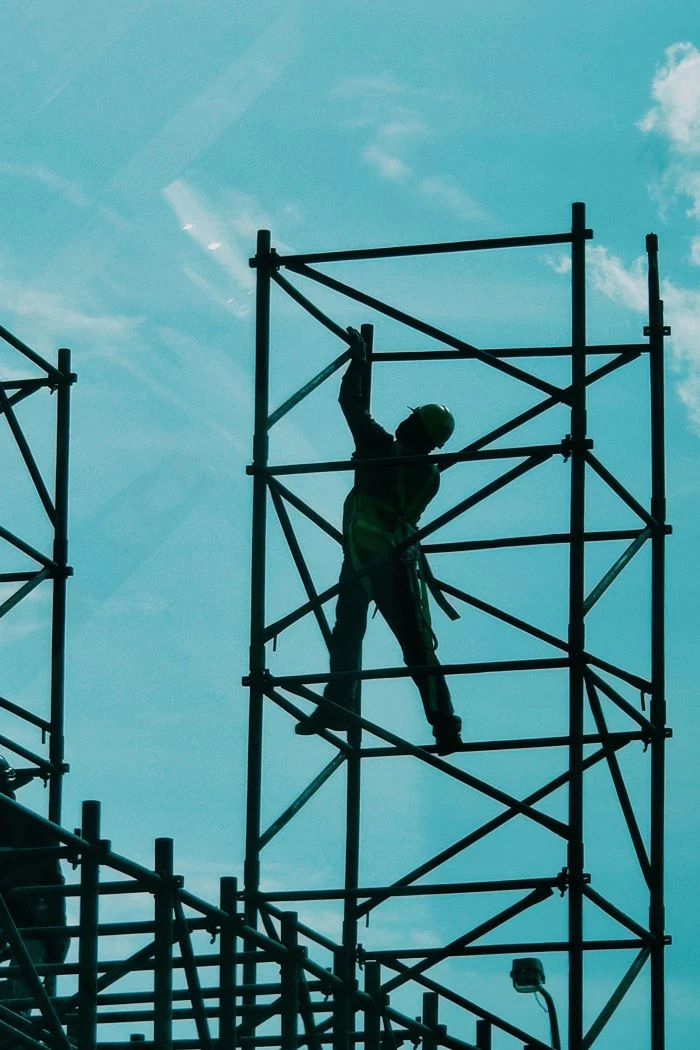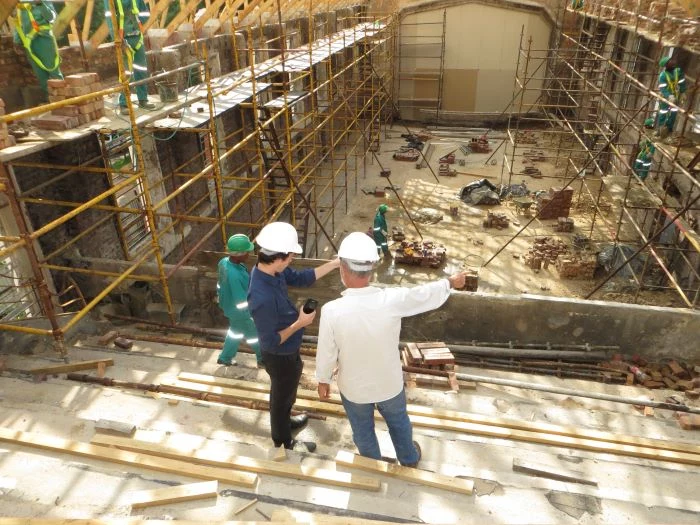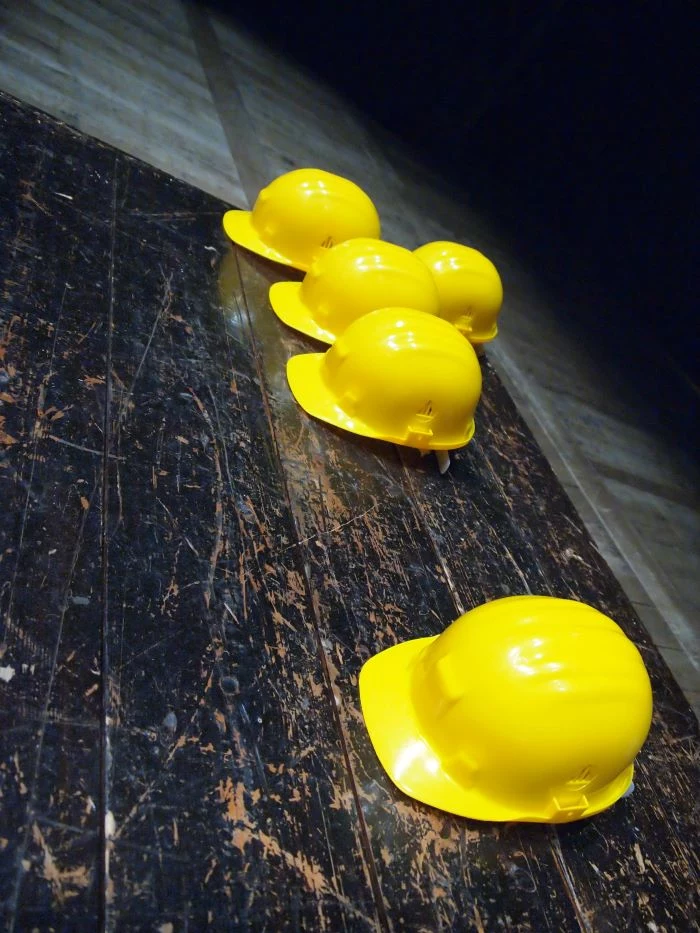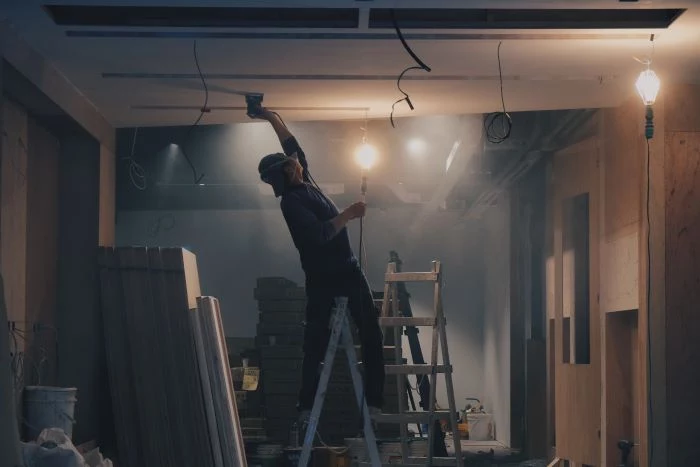My Playbook for a Crisis-Proof Construction Business
I’ve been in this business for a long time. I’ve ridden the crazy booms and steered my company through at least one major recession. I honestly thought I had a plan for just about anything. And then the world hit pause.
In this article
The silence on a job site is something you never, ever get used to. The sudden stop of machinery, the absence of crews, the gnawing uncertainty… it was a totally different kind of challenge. This wasn’t just about money. It was about safety, about supply chains that seemed to evaporate overnight, and about contracts that suddenly felt like they were written on tissue paper.
Let’s be real: a lot of us were scrambling. We were forced to learn lessons on the fly that should have been part of our foundation all along. But that massive disruption wasn’t the first, and it sure won’t be the last. Another economic downturn, a regional natural disaster, or some other global weirdness could be just around the corner.

The strategies that helped the best companies survive—and even thrive—weren’t just temporary fixes. They were about building a truly resilient business. This is the playbook we put together from all those hard-won lessons, designed not just to survive the next crisis, but to build a stronger, more predictable business every single day.
1. Your First Line of Defense: Ironclad Paperwork
When everything grinds to a halt, the first thing that starts up is the finger-pointing. And the most critical, yet least exciting, part of navigating a crisis is your documentation. This isn’t about setting up a fight; it’s about clarity and protecting your own hide.
Think about it. A delay isn’t just a delay in the eyes of a contract. You have to prove what caused it and how it blew up your schedule and budget. That force majeure (or ‘Act of God’) clause might look like a get-out-of-jail-free card, but it has rules. To use it, you have to show the event was unforeseeable, totally out of your control, and that you did everything you reasonably could to lessen the damage. Without meticulous records, proving that is next to impossible.

Your daily reports are the bedrock. They aren’t just for the superintendent; they are legal documents. A good daily report needs more than just who showed up. It has to include:
- Manpower Counts: Your crew, yes, but also every single sub’s crew. If a subcontractor is a no-show because of a shutdown or quarantine, that needs to be written down. Every single time.
- Work Performed (in detail!): Not “worked on drywall,” but “Installed 1,200 sq. ft. of drywall on the second floor, east wing, between gridlines C and F.” Specifics win disputes.
- Delays and Obstructions: This becomes the most important field. Note every single hiccup. “Received email notice that steel joist delivery is delayed 4 weeks due to factory issues.” or “City inspection for today postponed; inspector’s office is closed until further notice.”
- Material Deliveries: Record what arrived, but just as importantly, what didn’t arrive on schedule.
- Photos and Videos: A time-stamped photo is undeniable proof. We started mandating at least ten progress photos a day, uploaded directly to our project management software. It takes a foreman five minutes and can save you tens of thousands of dollars.
Heads up! Here’s a pro move: The Notice Letter.

As soon as you spot a potential delay, you have to formally notify the client or GC in writing. A phone call doesn’t count. Most standard industry contracts have strict rules about how and when you provide notice. Miss that window, and you could forfeit your right to a claim entirely.
Your letter doesn’t have to be fancy or aggressive. Honestly, simple is better. Just a straightforward email that says something like: “Per our contract, section X.Y, this is a formal notice of the following issues from this week that may impact the project schedule or cost: 1) Steel delivery from Supplier Z is now delayed 4 weeks. 2) The city’s permit office closure has delayed our foundation inspection.” That’s it. That’s the letter. It keeps everyone informed and protects your rights without starting a war.
Do This Today: Go into whatever you use for your daily reports—a template, an app, a notebook—and add a mandatory field called “Obstructions & Delays.” Make it impossible to fill out a report without thinking about it. This simple habit change is huge.

2. The Digital Job Site: From Advantage to Necessity
The construction industry has always been a bit slow on the tech uptake. But the recent global shutdown forced everyone’s hand. Suddenly, we couldn’t rely on in-person meetings or passing around a set of paper blueprints. The companies that already had a digital backbone were able to pivot in a day. The rest had to scramble under incredible pressure.
This isn’t about chasing every shiny new gadget. It’s about using proven tools to solve real problems. Here’s what actually works:
- Project Management (PM) Software: This is completely non-negotiable now. Tools like Procore, Autodesk Construction Cloud, or Viewpoint become the single source of truth for the entire project. All your daily reports, RFIs, photos, and drawings live in one place, accessible from a phone or a laptop. The excuse “I didn’t get the memo” completely disappears. A heads-up on cost: be prepared for subscription fees based on your company’s revenue. It can start around $5,000-$10,000 a year for smaller firms, but the time it saves on just one RFI or change order can pay for the whole thing.
- 3D Modeling & Virtual Walkthroughs: Building Information Modeling (BIM) became our secret weapon for keeping jobs moving. We used tools like Matterport to create “digital twins” of our sites. An out-of-state owner could put on a VR headset and feel like they were standing right there in the building. It kept approvals flowing when no one could travel.
- Asset & Tool Tracking: With sites shutting down on short notice, knowing where your expensive gear is becomes critical. We use simple trackers (like Milwaukee’s TICK or Hilti’s ON!Track) on our big-ticket items. A quick glance at an app shows us every asset’s location, which prevents loss and helps us move equipment to active sites where it’s needed most.
Of course, rolling out new tech isn’t always a walk in the park. The key is patience and showing your team how it makes their job easier, not just how it helps the office. When a superintendent sees that a digital RFI gets them an answer from the architect in two hours instead of two days, they’re sold.

Common Pitfall: The biggest mistake I see is buying expensive software without getting buy-in from your most senior, most respected superintendent first. If your field leader doesn’t champion it and see the value, it’s doomed. They have to be your partner in the rollout.
3. Your Supply Chain: From Lean to Resilient
For years, the industry mantra was “lean construction” and “just-in-time” delivery. And in a perfectly stable world, it’s brilliant for efficiency. But we learned the hard way that a system with zero buffer is incredibly fragile. A single factory closure halfway around the world could stall a multimillion-dollar project for months.
The old “just-in-time” model focuses on the lowest price and having materials arrive the day you need them. It keeps storage costs down, but it’s high-risk. A “resilient” model, by contrast, is about stability. You might pay 5% more for that regional supplier, but their lead time is predictable and they aren’t subject to the same international shipping snarls. That extra cost is really an insurance policy against a shutdown.

We immediately launched a supplier diversification program. For every key material, we now identify a primary, a secondary, and a tertiary supplier. A huge part of this is prioritizing regional sources. On one project, we had specialty light fixtures coming from a company tied to an Asian supply chain. When that vanished, we worked with the architect to find a similar product from a manufacturer one state over. It cost a little more, but it was available. Knowing your local industrial ecosystem is a massive competitive advantage.
Do This Today: Open a simple spreadsheet. Create four columns: ‘Critical Material,’ ‘Primary Supplier,’ ‘Secondary (Regional) Supplier,’ and ‘Notes (Cost/Lead Time).’ Now, just pick your top five most critical materials—maybe structural steel, windows, roofing material, whatever. Your homework is to find just ONE regional, secondary supplier for ONE of those items this week.
4. Your People: Leading Through Uncertainty
In any crisis, your people are both your most valuable asset and your biggest responsibility. Fear and rumors spread way faster than facts. Clear, consistent, and honest communication is the only antidote.
Safety, of course, took on a whole new meaning. We had to go beyond basic compliance and create a culture of shared responsibility. Our core protocols, based on guidance from health authorities, included a single point of entry for health screenings, staggered shifts to reduce crowding, and tool sanitation stations. For the health screening, we kept it simple with four key questions for everyone entering the site: 1) Have you had a fever in the last 24 hours? 2) Do you have a new or worsening cough? 3) Have you been in close contact with anyone who tested positive? 4) Are you waiting on the results of a test yourself? Simple, fast, and effective.
We had a scare on a hospital job. A drywaller tested positive. Because we had those strict protocols and our daily logs showed exactly who he’d worked near, we could perform instant contact tracing. We sent the four other people he’d been in close contact with home to quarantine. The other 50 people on site? They kept working safely. Without that system, we would’ve had to shut down the entire project for weeks.
Quick Win: The next time you walk a job site, pull one of your crew leaders aside. Don’t talk about production. Just ask, “Honestly, what are you hearing from the team? How’s morale?” Just listening can be the most important thing you do all day.
5. Planning Ahead: Building a Business That Lasts
The biggest lesson of all is that a crisis plan can’t be some dusty binder on a shelf. It has to be a living, breathing part of your operations. Resilience isn’t an accident; it’s a feature you design into your business.
This means creating a real Business Continuity Plan (BCP). It doesn’t have to be 100 pages long. Just answer a few key questions: Who’s in charge if a key leader is out? How does accounting get done if the office is closed? Is all our critical data backed up to the cloud? Keep your bank, bonding agent, and insurance provider in the loop. These are the people you call first, so a good relationship is everything.
And here’s a technique the pros use: financial stress testing. Once or twice a year, sit down and run simulations.
Do This Month: Ask your bookkeeper or CFO to run this exact scenario: “If our revenue dropped by 30% for the next three months, and all our clients paid us 30 days late, how many payrolls could we make with the cash we have right now?” The answer to that question will be uncomfortable, but it will tell you everything you need to know about the health of your cash reserves.
If the last few years have taught us anything, it’s that you can never get complacent. The principles of solid documentation, smart tech, resilient supply chains, and people-first leadership aren’t just for a crisis. They’re the cornerstones of a modern, professional, and profitable construction business. The storm might have passed for now, but the smart contractor is using the calm weather to reinforce the foundation.
Inspirational Gallery
When a crisis hits, communication becomes your most valuable tool. Don’t go dark on your clients or your crew. Even if the news is bad—a supply delay, a shutdown order—delivering it clearly and quickly builds trust. A weekly summary email or a quick group text can preempt dozens of anxious phone calls and stop rumors before they start. Transparency, even when it’s uncomfortable, shows leadership and keeps everyone on the same side.
According to a study by SCORE, over 80% of small businesses that fail do so because of poor cash flow management.
This isn’t about profitability; it’s about liquidity. A profitable project on paper is worthless if you can’t make payroll next Friday. That’s why a crisis-proof business treats its cash reserve and line of credit not as a bonus, but as essential safety equipment, just like a hard hat or fall protection.
How do you prevent your best talent from leaving during a major slowdown?
It’s a tough question when you can’t guarantee hours. The key is investing in them in other ways. Use the downtime for cross-training—teach a carpenter the basics of site management software or get your crew certified in a new installation technique. This not only makes your team more versatile for the future but also shows them you’re invested in their long-term growth, not just their short-term labor.
Think beyond new builds. The most resilient construction businesses have diversified revenue streams. When big projects are stalled, a dedicated service and maintenance division can become a lifeline. Consider offering:
- Annual property inspection services for past clients.
- Small-scale repair and renovation jobs.
- Specialized maintenance for commercial HVAC or roofing systems.
These smaller, recurring jobs provide consistent cash flow when the big contracts are uncertain.
The time to repair the roof is when the sun is shining.
This old adage is the golden rule for construction finance. Don’t wait for a downturn to secure a business line of credit or build up your cash reserves. Approach your bank when your books are strong and projects are plentiful. Having that financial buffer in place before you need it is the single biggest factor in weathering any storm.
Leasing Heavy Equipment: Ideal for short-term or specialized projects. It avoids a large capital outlay, includes maintenance, and allows you to use the latest models. However, costs can add up over the long term.
Buying Heavy Equipment: A long-term asset that offers lower operational costs over time and tax depreciation benefits. But it requires significant upfront capital and you’re responsible for all maintenance, storage, and insurance.
For many small to mid-size firms, a hybrid approach offers the most flexibility to scale up or down as the market dictates.
A critical mistake: Treating your suppliers like a transaction. During the supply chain crunch, companies with long-standing, loyal relationships got the first call when a load of lumber or a pallet of windows became available. Paying your bills on time, communicating your needs clearly, and treating your supplier reps with respect isn’t just good manners—it’s a core business strategy that pays dividends when materials are scarce.
- Real-time progress tracking from anywhere.
- Instant documentation of site conditions to resolve disputes.
- A single source of truth for plans and change orders.
The secret? Leveraging modern, cloud-based project management software. Platforms like Procore or Buildertrend aren’t just for mega-firms anymore. They provide the digital paperwork and communication hub that can be the difference between proving a delay and paying for it yourself.
The next crisis might not be economic, but physical. Review your insurance policy now, not when you need to file a claim. Standard general liability often isn’t enough. Look into specific riders or separate policies like Business Interruption Insurance, which can cover lost income during a forced shutdown, and Inland Marine Insurance, which protects your tools and equipment while in transit or at a job site.









